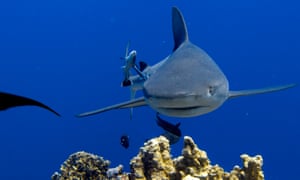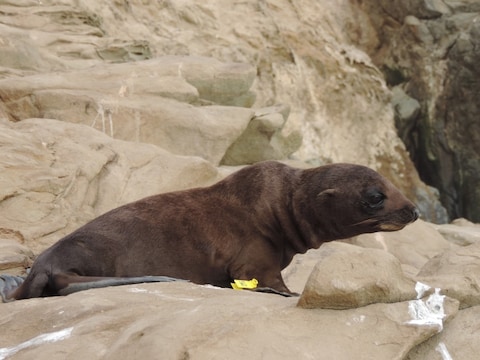In July, Sea Save’s Week in Review reported on the proposed construction of a Cruise Berthing Facility in the Cayman Islands to increase cruise tourism. The Environmental Impact Assessment reports the extend of the anticipated damage here. Although these environmental impacts have been identified, the project has not halted. The coral dreading that will occur this process will destroy a large portion of the reefs in Grand Cayman. This week, an article was published in the Huffington Post to discuss the thoughts and concerns of many of the islanders and other close to the island. Read more… Interested in signing the petition and preserve this natural beauty? Click here… As of 06:00 EST we are at 79% of our 30,000 signature goal!
 New Zealand will create a 620,000 square km protected area encompassing the Kermadec Islands and surrounding waters. The sanctuary is 1000 km NE of New Zealand in the South Pacific Ocean and the area will cover 15% of the country’s economic zone. This area will protect 35 species of whales and dolphins, 150 types of fish, and three sea turtle species. To ensure preservation, the area will be monitored by the navy via satellite technology. According to Matt Rand, director of the Pew Charitable Trust’s global ocean legacy campaign, “this commitment is an exciting step toward meeting global goals to safeguard at least 30% of the ocean throught fully protected marine reserves”. Read more…
New Zealand will create a 620,000 square km protected area encompassing the Kermadec Islands and surrounding waters. The sanctuary is 1000 km NE of New Zealand in the South Pacific Ocean and the area will cover 15% of the country’s economic zone. This area will protect 35 species of whales and dolphins, 150 types of fish, and three sea turtle species. To ensure preservation, the area will be monitored by the navy via satellite technology. According to Matt Rand, director of the Pew Charitable Trust’s global ocean legacy campaign, “this commitment is an exciting step toward meeting global goals to safeguard at least 30% of the ocean throught fully protected marine reserves”. Read more…
 While night diving in the Solomon Islands, divers discovered a biofluourescent hawksbill sea turtle. Biofluorescence occurs when an organism absorbs light from an outside source and reemits it as a different color, different from bioluminescence. This phenomena has been studied in corals, fish, eels, and sharks. Under the blue light, the turtle was a brilliant green with hints of red, it’s likely that the red was due to some biofluorescent algae. See the video here…
While night diving in the Solomon Islands, divers discovered a biofluourescent hawksbill sea turtle. Biofluorescence occurs when an organism absorbs light from an outside source and reemits it as a different color, different from bioluminescence. This phenomena has been studied in corals, fish, eels, and sharks. Under the blue light, the turtle was a brilliant green with hints of red, it’s likely that the red was due to some biofluorescent algae. See the video here…
We’ve got you covered! This National Geographic article describes a few of the over 180 species of fish and sharks that have the ability to biofluoresce.These animals will reflect the blue light hitting the surface as red, green, or orange. Read more…
5. Shell’s Departure Will Mean No Drill Rigs in Chukchi Sea
 This week, Royal Dutch Shell announced that it will end exploration in the Chukchi Sea. The exploration was indefinitely suspended after finding insufficient oil and gas in an exploratory well. The company could not justify the tremendous development costs of drilling in the Arctic environment. Shell was the most robust bidder for the Chukchi Sea leases in 2008. Shell’s project cancellation will forewarn and possible deter the other companies with smaller lease holdings in the Chukchi Sea. Read more…
This week, Royal Dutch Shell announced that it will end exploration in the Chukchi Sea. The exploration was indefinitely suspended after finding insufficient oil and gas in an exploratory well. The company could not justify the tremendous development costs of drilling in the Arctic environment. Shell was the most robust bidder for the Chukchi Sea leases in 2008. Shell’s project cancellation will forewarn and possible deter the other companies with smaller lease holdings in the Chukchi Sea. Read more…
 This week, New South Whales launched a shark summit to discuss the potential impact that shark culling may have on climate change. The main topic of the conference will be shark deterrent technologies. A paper published in Nature Climate Change warned that removing the top portion of the food chain, will create a trophic cascade throughout the food chain. This will ultimately result in release of carbon into the atmosphere. According to the study, 90% of the world’s sharks and large predator fish are wiped out through overfishing and culling while potential prey- sea turtles, stingrays, and crabs- have flourished. This has impacted the natural carbon cycle, if 1% of vegetation is lost, 460 metric tons of carbon dixoide would be released (FYI- that’s equivalent to the emissions of 97m cars!). Read more…
This week, New South Whales launched a shark summit to discuss the potential impact that shark culling may have on climate change. The main topic of the conference will be shark deterrent technologies. A paper published in Nature Climate Change warned that removing the top portion of the food chain, will create a trophic cascade throughout the food chain. This will ultimately result in release of carbon into the atmosphere. According to the study, 90% of the world’s sharks and large predator fish are wiped out through overfishing and culling while potential prey- sea turtles, stingrays, and crabs- have flourished. This has impacted the natural carbon cycle, if 1% of vegetation is lost, 460 metric tons of carbon dixoide would be released (FYI- that’s equivalent to the emissions of 97m cars!). Read more…







